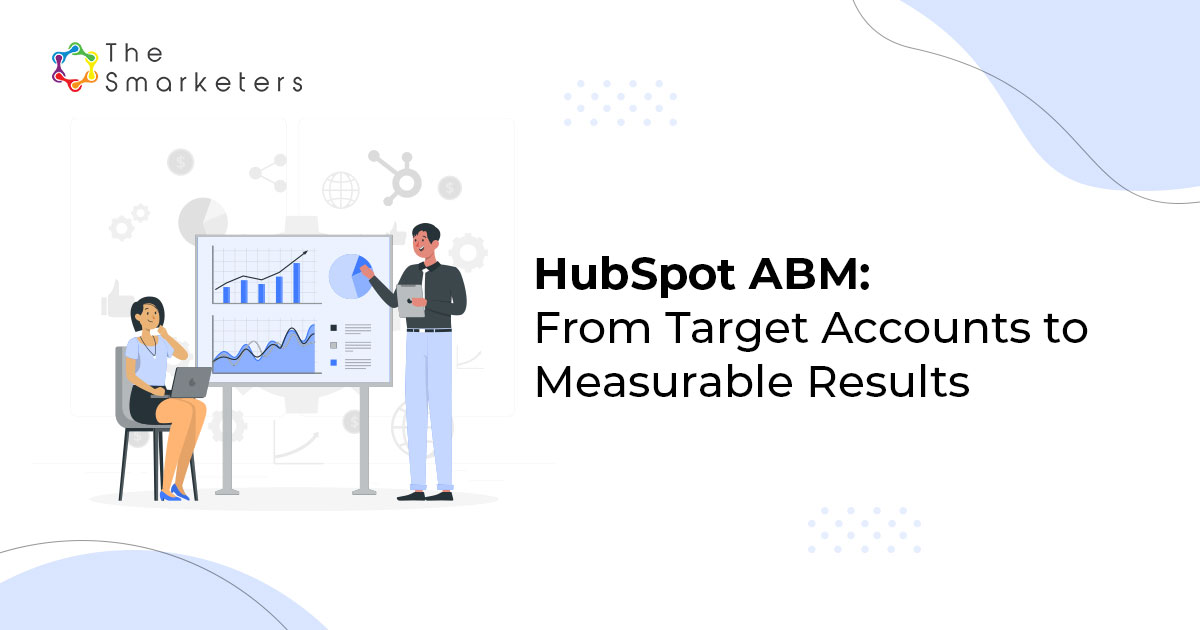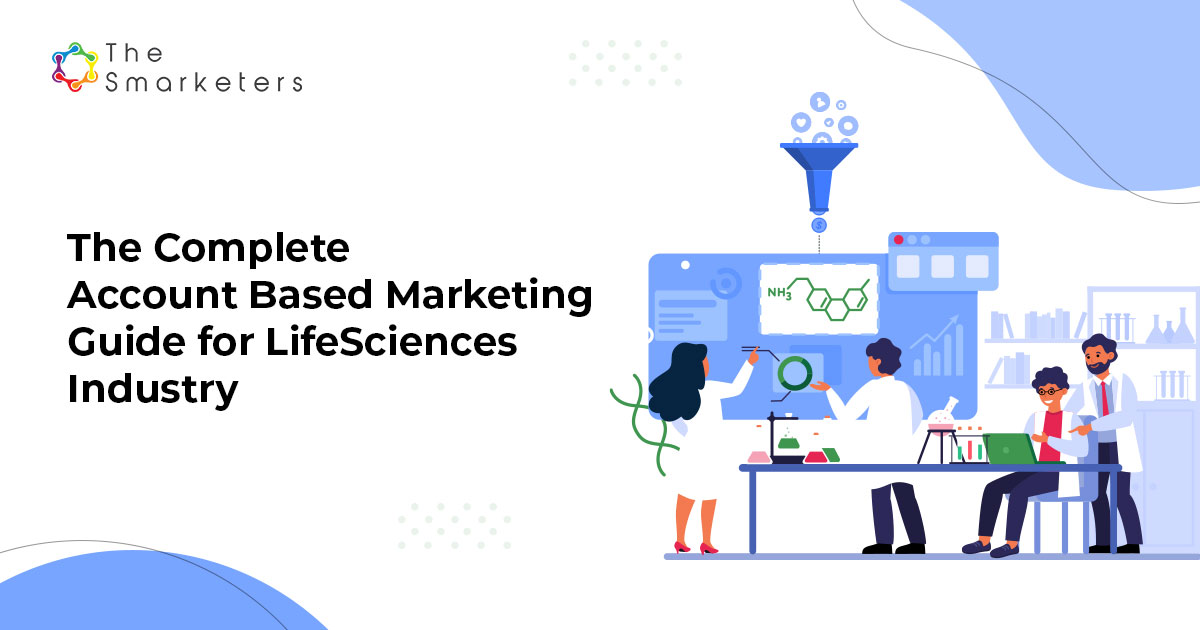Every B2B organization is jumping on the account-based marketing (ABM) bandwagon, and you fear missing out. Considering the fact that ABM makes companies 70% better at closing deals, your sales team might be pushing hard for taking the ABM route. Chances are you might have already started exploring tools and options that fit your budget and go well with your inbound marketing strategy as well.
However, how do you know if your organization is ready for account-based marketing? How do you know you have everything in place to ensure the smooth implementation of the ABM program?
We have got all the answers.
Assessing your ABM success readiness
You might have heard a lot of praise about account-based marketing lately, from everyone around you. And, while there’s plenty of guidance on how to get started with ABM, there’s little advice on when and if at all you should consider ABM as the best fit for your business.
Let’s take off the blindfold and help you see for yourself, whether you are ready to reap success from the tactic yet. You’ll need to start by assessing the following key areas to understand your preparedness for account-based marketing.
Is ABM the best fit for your organization?
One of the biggest ABM myths is that it is suitable for all B2B organizations. While it is considered an effective modern marketing strategy with higher conversion rates by 97% of B2B marketers, not all B2B companies are a match for ABM.
The first step in the assessment process is determining if your business is a good match.
Start by asking if you have big-ticket offerings and specific solutions to sell to high-value accounts where multiple personas or stakeholders are involved in the buying decision process. And, if the lifetime customer value of these solutions will be able to generate larger average deal sizes and longer sales cycles. As this strategic approach uses highly targeted, personalized campaigns to help marketing drive focus on specific target accounts, ABM is best suited for B2B companies that fit the above-mentioned criteria.
Once you find that ABM applies to your company, it is time to assess the readiness.
Organizational readiness
Taking up account-based marketing is not a decision limited to just one of the sales, marketing or technology teams. It is a company-wide initiative. Therefore, all your departments must be on the same page about its adoption. Your first task is to figure out the opinion of all teams regarding the tactic. You don’t have to blindly advocate account-based marketing at this stage; however, find out what most people think about it as an approach to doing business.
But apart from how comfortable and aligned your teams are with account-based marketing, it is also important to see if the tactic is a culture fit for your organization.
Marketing readiness
So, everyone in your organization has a positive view of account-based marketing. The marketing team supports the decision to shift towards it, and use it alongside their next inbound marketing strategies too. In fact, the management has given a go-ahead too. Everything’s great.
But is showing an inclination all the validation that you need? No.
You need to find out whether your marketing team is well equipped to handle account-based marketing. How aligned are your core marketing functions? How trained and mature is the team to handle accounts in a targeted manner? And most importantly, how does the marketing team approach demand and lead generation? Do they have the required capability and skill to switch from a traditional process to a more account-focused approach?
All these questions need to be given good thought before building a case for following account-based marketing in your organization.
Sales and marketing alignment
While ABM is a marketing strategy, the success of this program is very heavily reliant on the nature of the relationship between the marketing and sales team. Sales and marketing alignment remains one of the biggest challenges that marketers face.
Combat this challenge by checking the present state of core sales processes within your company. Assess the level of experience of the sales team. Find out if there are strategic sales representatives who can become a part of the ABM core team and play a vital role in the success of your ABM strategy.
Technology and resource availability
Next, you need to find out whether your current tech stack is enough to successfully help implement account-based marketing initiatives. If not, how much would you have to invest in switching to an account-based marketing tool that fits your inbound marketing strategy? Would you be required to make a complete switch or are there tools that can be integrated with your current martech arsenal?
The problem with most marketing automation tools today is that they are mainly lead-centric, and don’t support account-based marketing much. To become account-focused instead of plainly lead-centric, you’ll need tools that help with Marketing orchestration. In terms of non-tech resources, you’ll need to evaluate the availability of skilled people who are either already experienced in ABM, or of those who can quickly understand the new processes.
Data accuracy and integrity
Though it might be the fourth point in this list, data accuracy and integrity serves as the foundation of success for any marketing initiative. For ABM, data accuracy and integrity is important for marketers and sales team to pick the right accounts. 60% of companies have overall data health that’s ‘unreliable.’ And, if your database is full of incorrect, outdated, or erroneous account information, how can your inbound marketing strategy give results?
For account-based marketing, you will need to draw data from firmographics, demographics, predictive, and insight-based data. If your foundation is right, the accounts that you’ll choose will be accurate, and the final conversions will take less time, as well as increase your revenue possibility.
 Your ‘view’ of ABM and your ‘need’ for it
Your ‘view’ of ABM and your ‘need’ for it
Once you’ve accessed the above factors, and are able to decide in favour of ABM, the next thing on the list is to decide your ABM objective. What should be the goal of ABM for your marketing and sales team? Of course, you want to speed up your sales pipeline, focus on those accounts that have a high conversion probability, and reduce your cost by not spending on leads that are either not sales-ready or not interested in buying at all. But these aren’t just the achievable that you should be focusing on.
Taking the business perspective, you’ll need to think ‘long-term’ and visualize the future state of ABM in your organization. What’s your view of your business in the next ten years. Should ABM be a business priority given your view of your future organization? These are good questions that need a good amount of your thinking time.
Conclusion
Embarking on account-based marketing without making a clear assessment of the above key factors is like putting the cart before the horse. The worry is that you can’t undo the harm done once you have already implemented ABM without being completely sure of its chances of success for your business. Worst, you’ll end up investing double the resources trying to enable the same thing. Don’t let stats and numbers hurry you.
First, focus on your organization’s needs, ability, resource availability, and sales-marketing readiness for an account-based approach. All these factors will help you build a solid ABM-focused inbound marketing approach geared towards long-term business success.













